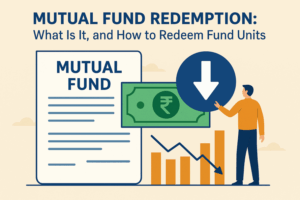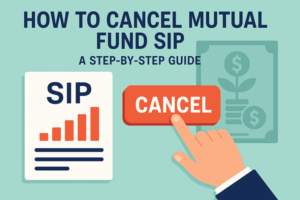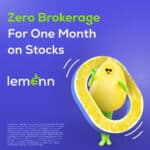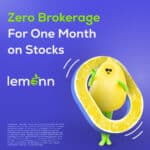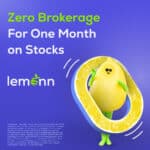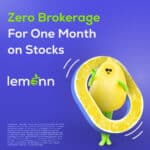SIP Calculator
×
Best Performing Mutual Funds in India in the Last 5 Years
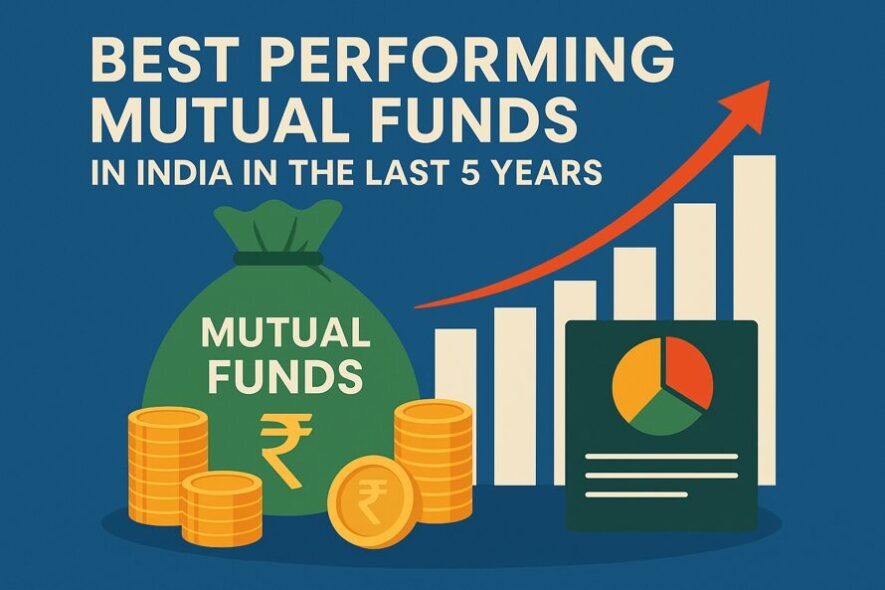
Overview of 5-Year Performance Trends
In many ways, the last five years kind of reshaped India’s mutual fund industry. Think about it, markets crashed during the pandemic, bounced back, and then kept climbing to record highs. Through every twist, funds gave investors repeated chances to build wealth. The steady flow of domestic money made the difference. SIPs turned into a cultural habit, pumping thousands of crores each month. That constant stream made Indian markets far more resilient than many expected, even when foreign investors pulled out billions.
And the growth story didn’t stop with the giants. Mid-cap and small-cap funds roared ahead. Many of them doubled or even tripled investors’ money across these five years. Anyone who stayed disciplined and kept investing saw rewards pile up faster than expected.
Growth of Indian Equity Market (Nifty, Sensex returns)
To put performance in perspective, look at the benchmarks. From June 2020 to June 2025, the Nifty 50 grew at a 17% CAGR, according to Screener. The Sensex clocked about 16.2% CAGR during the same period. Strong numbers, no doubt. They became the measuring stick for every fund manager.
But here’s the kicker: several actively managed funds didn’t just match these benchmarks; they blew past them. Many mid-cap and small-cap funds turned in 30%+ CAGR, more than double the headline indices. That kind of outperformance doesn’t come by chance. It came from smart stock picking, bold sector bets, and the support of steady inflows.
“Start investing with confidence! Explore the best
mutual funds
and grow your wealth.”
Role of retail participation and domestic inflows
The huge inflow of retail money changed everything. Monthly SIP inflows shot past ₹15,000 crore and stayed there. Unlike foreign institutional investors, who moved in and out with global news, retail investors showed remarkable patience. Even when markets wobbled, they didn’t stop their SIPs. That discipline created a backbone of stability.
For fund managers, this was gold. The constant cash flow let them build long-term positions without worrying about sudden redemptions. They could hold on to high-conviction stocks and wait for the thesis to play out. In a way, retail investors became the real power behind India’s equity boom.
Top-Performing Equity Funds by Category
Large-Cap Leaders
Large-cap funds invest in some of India’s biggest banks, IT powerhouses, FMCG giants, and energy majors. They’re usually the safe bet. Over the past five years, many large-cap funds tracked the indices closely. Axis Bluechip Fund and Mirae Asset Large Cap Fund delivered steady growth in the 15–16% CAGR range. For first-time investors, these funds offered stability with equity exposure.
But the real fireworks came from a few standout strategies. Nippon India Large Cap Fund turned in a stunning 24.46% CAGR in the last five years. ICICI Prudential Large Cap Fund wasn’t far behind at 21.52% CAGR, and HDFC Large Cap Fund impressed with 21.02% CAGR.
What set them apart? Timing and allocation. These funds took heavier bets on banking and IT when cycles favored them, then tapped into India’s consumption story through FMCG plays. The result: returns far beyond what most expect from large caps.
Large & Mid-Cap Picks
Large and mid-cap funds were in a sweet spot. They offered the safety of big companies and the growth engine of mid-caps. This balance worked beautifully in the last five years.
The undisputed star was the Motilal Oswal Large & Midcap Fund, which clocked a 28.41% CAGR in the last five years. By blending stable large-cap anchors with fast-rising mid-cap bets, it delivered one of the best wealth-creation stories in this segment.
Others like Canara Robeco Emerging Equities Fund and Kotak Equity Opportunities Fund also stood strong, delivering consistent double-digit gains. These funds appealed to investors who wanted more than the predictability of large caps but didn’t want the full-on volatility of small-cap territory.
The success of this category highlighted an important lesson: diversification within equity matters. Mixing sizes gave investors the best of both worlds: stability from large names and explosive growth from mid-caps. That’s why this bucket has gained so much attention among investors building balanced portfolios.
Mid-Cap & Flexi-Cap Outperformers
Mid-cap funds were the darlings of the last five years. They captured the Indian growth story at its most dynamic level. Many mid-cap companies benefited from rising domestic demand, government infrastructure spending, and digital transformation.
Motilal Oswal Midcap Fund stood out with an outstanding 32.90% CAGR in the last five years. HDFC Mid Cap Fund also shone, delivering 28.42% CAGR during the same period. These funds proved the potential of mid-sized businesses to scale rapidly in a growing economy.
Flexi-cap funds, which allow managers to invest across large, mid, and small caps, also had winners. Franklin Build India Fund delivered a 32.88% CAGR in the last five years, riding heavily on infrastructure-driven plays. Parag Parikh Flexi Cap Fund became a retail favorite by combining Indian equities with global exposure, including holdings in US tech giants like Alphabet and Amazon.
Small-Cap High-Growth Picks
Small-cap funds carried the most risk, but they also created the biggest wealth stories. These funds backed smaller, niche businesses that exploded as India’s economy recovered and expanded.
The leader was the Quant Small Cap Fund, which delivered an incredible 33.8% CAGR over the last five years. Nippon India Small Cap Fund wasn’t far behind with 31.40% CAGR. Bandhan Small Cap Fund posted a 29.97% CAGR in the last five years, while HDFC Small Cap Fund clocked a 29.67% CAGR. Invesco India Smallcap Fund also joined the list with a 29.03% CAGR in the last five years.
Other Noteworthy Funds & Strategies
ELSS & Tax-Saver Funds
ELSS funds combine wealth creation with tax savings. Mirae Asset Tax Saver Fund and Axis Long Term Equity Fund stood out in this category, both delivering 13–15% CAGR over five years. These funds gave investors Section 80C benefits while encouraging a three-year lock-in, which in turn promoted long-term investing discipline.
Debt & Hybrid Funds Overview
Debt funds stayed conservative, with most delivering 5–7% CAGR. They suited investors who wanted stability rather than high growth. Hybrid funds struck a better balance, combining equity and debt. ICICI Prudential Equity & Debt Fund delivered 10–11% CAGR, offering a middle ground for moderate-risk investors.
Factor-Based and Value-Oriented Funds
Factor-based funds also gained ground. Products like Nippon India ETF Nifty 50 Value 20 gave exposure to value stocks. Funds focused on low-volatility and quality also found takers among risk-averse investors. These strategies didn’t match the 30%+ CAGR of small-caps but added valuable diversification.
How to Interpret 5-Year Returns
CAGR vs trailing returns methodology
When you look at mutual fund performance, CAGR is your best indicator. It tells you the average yearly growth over a fixed stretch. Say you invested ₹10,000 and it grew to ₹20,000 in five years, that works out to roughly 14.8% CAGR. That’s the power of compounding laid out in a single number.
Trailing returns, on the other hand, can trip you up. They only show performance between two dates. If one end of that period happened to be a bull market peak or a correction low, the picture looks skewed.
Rolling returns and consistency (e.g., Motilal Oswal, SBI)
If CAGR shows the big picture, rolling returns show consistency. They take overlapping periods, like three-year blocks, and measure performance across each. This smooths out short-term highs and lows, indicating whether a fund is reliable across various market cycles.
Take Motilal Oswal Midcap 30 or SBI Small Cap Fund. Both showed strong rolling three-year returns over the last five years. That means they didn’t just shine once during a lucky bull run, they kept delivering, even when markets turned choppy. For an investor, that’s reassurance. You’re betting on a fund that has held its ground in different market moods.
Risks: small/mid-cap volatility, expense ratios, lock-in (ELSS), etc.
Now, here’s the flip side: every outperformance comes with risks. Small-cap and mid-cap funds can swing wildly when markets correct. That volatility is the price you pay for those eye-popping 30%+ returns. Expense ratios matter too; higher costs directly eat into gains.
And if you’re putting money in an ELSS fund, remember the three-year lock-in. It builds discipline but limits liquidity. If you suddenly need cash, that money stays tied up. The key lesson: understand these risks before investing. High growth is tempting, but only works if you know what comes with it.
Building a Diversified Portfolio
Allocating across large, mid, small, flexi-cap buckets
The last five years hammered home one lesson: balance wins. A practical mix could look like this: 40% in large-cap funds for stability, 30% in mid-caps for growth, 20% in flexi-caps for flexibility, and 10% in small-caps for that extra kicker.
Tax-efficient ELSS for long-term goals
For salaried investors, ELSS is a no-brainer. By investing up to ₹1.5 lakh a year, you cut your taxable income under Section 80C. But that’s only half the story. Because ELSS invests in equities, the money compounds over time.
Imagine doing this steadily for 10 years; tax savings plus equity growth add up big. The three-year lock-in forces discipline, which many investors actually need. Instead of dipping into funds, you let compounding do the heavy lifting.
When to include debt/hybrid or international funds
Not every goal is 10 or 15 years away. That’s where debt and hybrid funds come in. They add stability and are better suited for short-term needs or conservative investors.
And then there’s the global angle. Adding a slice of international funds gives you exposure to US tech giants or other global themes. Think Apple, Amazon, or emerging markets outside India. They diversify your portfolio beyond local trends.
Data & Methodology
Source & date of returns (CAGR over June 2020–June 2025)
All performance numbers are based on CAGR for direct plans from June 2020 to June 2025. Data was collected from AMC disclosures and platforms like Lemonn, Groww, and ET Money.
Emphasis on direct plans & 5-year trailing returns
Only direct plans were considered, since they have lower expense ratios and give higher net returns. Wherever possible, trailing 5-year data was used to maintain consistency across categories.
Conclusion
The last five years proved that Indian mutual funds are powerful wealth creators. Large-cap funds gave stability, large & mid-cap funds balanced growth, mid-caps and flexi-caps created alpha, and small-caps rewarded patience with explosive gains. ELSS funds added tax benefits, while hybrid and debt funds gave stability. The next five years may bring new winners, but the lesson of diversification and discipline will always stay the same.
FAQs:
- What is the best mutual fund to invest in for the next 5 years?
Funds like Motilal Oswal Midcap Fund and Parag Parikh Flexi Cap Fund look stable, with consistent performance and balanced portfolios.
- Which small-cap fund has performed the best recently?
Quant Small Cap Fund topped the charts with a 36.85% CAGR over the last five years.
- Is ELSS better than regular equity funds over 5 years?
ELSS matches equity growth but adds tax savings, making it more efficient for salaried investors.
- How much return can I expect from large-cap funds?
Large-cap funds typically deliver 12–20% CAGR over a five-year horizon, depending on the fund.
- Are debt/hybrid funds worth investing in for the long term?
Yes, they suit conservative investors. Hybrid funds balance equity and debt, while debt funds offer stability for long-term goals.
Disclaimer
The stocks mentioned in this article are not recommendations. Please conduct your own research and due diligence before investing. Investment in securities market are subject to market risks, read all the related documents carefully before investing. Please read the Risk Disclosure documents carefully before investing in Equity Shares, Derivatives, Mutual fund, and/or other instruments traded on the Stock Exchanges. As investments are subject to market risks and price fluctuation risk, there is no assurance or guarantee that the investment objectives shall be achieved. Lemonn (Formerly known as NU Investors Technologies Pvt. Ltd) do not guarantee any assured returns on any investments. Past performance of securities/instruments is not indicative of their future performance.

